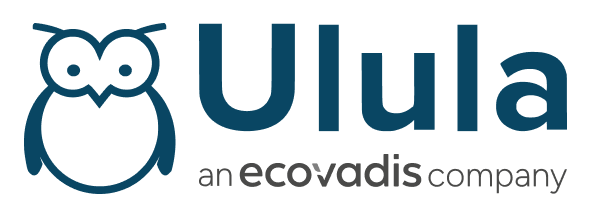Italy’s wine industry, renowned for producing some of the world’s most celebrated, luxurious wines, harbors a troubling secret. Migrant workers throughout the wine supply chains are at risk of falling victim to forced labor.

Migrant workers throughout the wine supply chains are at risk of falling victim to forced labor
Migrants have been left increasingly vulnerable as a result of the Italian government’s dismantling of key accountability and transparency measures in subcontracting practices. Italy’s work permit system has also come under criticism from local migrant rights organisations. This only adds to the opaqueness of the industry. These conditions have pushed at-risk workers deeper into the shadows, and left businesses in the wine industry at risk of being complicit in forced labor practices.
Despite changes to subcontracting rules, Italy’s strong framework prohibiting forced labor will require the wine industry to ensure its supply chain is free from forced labor and illegal practices. Digital tools are offering companies in the sector a cost-effective and credible way to get genuine insights on the conditions of workers in their wine supply chains. Here’s how the Italian wine industry can use digital tools and worker voice technology to avoid their wines being corked by forced labor.
The Human Cost of a Glass of Barolo
Luxury wines net luxury prices for growers, but all parts of the supply chain must be made aware of the human cost behind each bottle. As Italian wine focuses on maximizing profits and reducing costs, some wine-makers have been known to cut corners in the area of labor rights. Aside from the global and local rules that prohibit forced labor, there are severe reputational risks, transparency and ethical issues that companies would do well to avoid. Don’t be blinded by prestige, the industry may appear to be in a state of permanent boom, that’s not necessarily the case.
About two thirds of the 4,000 to 5,000 workers in Italy’s vineyard are at risk of exploitation. Language barriers further isolate migrant workers by making effective grievance monitoring and remediation almost impossible without tailor made tools. These at-risk workers often endure poor wages, wage theft, lack of legal status, racial discrimination, substandard working conditions.
Caparolato: A Veil Over Exploitation
The “caporalato” subcontracting system sits at the heart of the issue. In this system, intermediaries, who are often migrants themselves, are used to recruit laborers for agricultural work, creating additional links in the chain that complicate oversight and render auditing by traditional methods almost impossible. The International Organization for Migration (IOM) recognizes that recruitment by unlicensed subagents is an acute risk for migrant workers and a gateway to worker exploitation.

The wine industry brings a lot of money, a lot of work and a lot of prestige into the region
The laws that are in place aren’t always implemented as local workers don’t like to talk about the ongoing exploitation; the wine industry brings a lot of money, a lot of work and a lot of prestige into the region. This means that abuses often go unchecked and the issue swept under the rug. So it’s left to the workers to speak for themselves, which is easier said than done.
Progress Through Awareness
These practices are already under fire from regulators. While there is some uncertainty around the EU’s Corporate Sustainability Reporting Directive (CSRD) and the Corporate Sustainability Due Diligence Directive (CS3D), the forced labor regulation applies to all companies. To ensure they maintain a license to operate, companies should proactively protect themselves from risks and uphold labor and human rights standards by implementing effective due diligence practices that conform to contemporary HRDD compliance standards and best practices.

the IOM recommends making workers rights issues more visible through participation and accessibility
But top down pressure alone isn’t enough. Private companies must also take responsibility for their own practices and the welfare of workers in their supply chain. A key issue is how the Italian wine industry maintains worker invisibility through a lack of education and a lack of awareness, and the solution is to make workers rights issues more visible through participation and accessibility, as recommended by the IOM.
The problem with the caporalato scheme is twofold, it makes it harder for companies to exercise proper oversight in their recruitment practices and close a channel to grievance alerting and remediation for workers. Companies need to exercise more responsible recruitment by avoiding the caporalatos where possible. Companies must also help make workers aware that channels do exist like anti-caporalato helpdesks where they can speak out should they be exposed to unfair recruitment practices.
Digital Solutions: Illuminating the Invisible Workforce
HRDD practices that embrace digital methods and worker voice technology are key for bringing Italy’s unseen workers into the light. It’s difficult for traditional, in-person audits to engage workers that are seasonal by nature, or contracted through third parties under caporalato, for example. These workers move around, and it’s not always easy to get sight of potential forced labor risks. Digital HRDD tools offer promising solutions to increasing worker visibility. Digital auditing and data collection improve consistency and transparency in labor practices. Embracing these new developments can give seasonal workers a voice and improve lives.
Digital HRDD surveys allow companies to keep track of risk in their supply chain, and amplify worker voice by going to them directly for feedback on their working conditions. Workers highlight risks anonymously, in any language and on any device, such as their mobile phone, so they aren’t sidelined by issues like language barriers or digital literacy. Anonymous, language-agnostic grievance mechanisms can help highlight instances of discrimination and abuse and enable companies to do something about it.
Digital feedback mechanisms make workers’ devices work for them. Migrants can use them to access support they might otherwise be blocked from. Mobile technology allows workers to stay connected to forms of remediation, so they’re less likely to fall through the cracks.

Digital HRDD surveys allow companies to keep track of risk in their supply chain
Companies that use digital tools to gather and share data on worker risk in their supply chain will help the industry as a whole, as these tools remain cost effective at scale. Other companies will be more likely to improve their practices when they see others doing the same and these improved practices will end up baked into the system, improving the lives of future migrant workers too.
The exploitation of workers in Italy’s wine industry is a pressing issue that demands immediate attention from the companies who operate there. Enhancing company HRDD procedures by introducing digital tools of communication and feedback collection, stakeholders can work together to eradicate forced labor and ensure that the production of Italy’s wine remains well balanced, and free of worker exploitation.
Help Ulula illuminate the invisible workforce by getting in touch.

